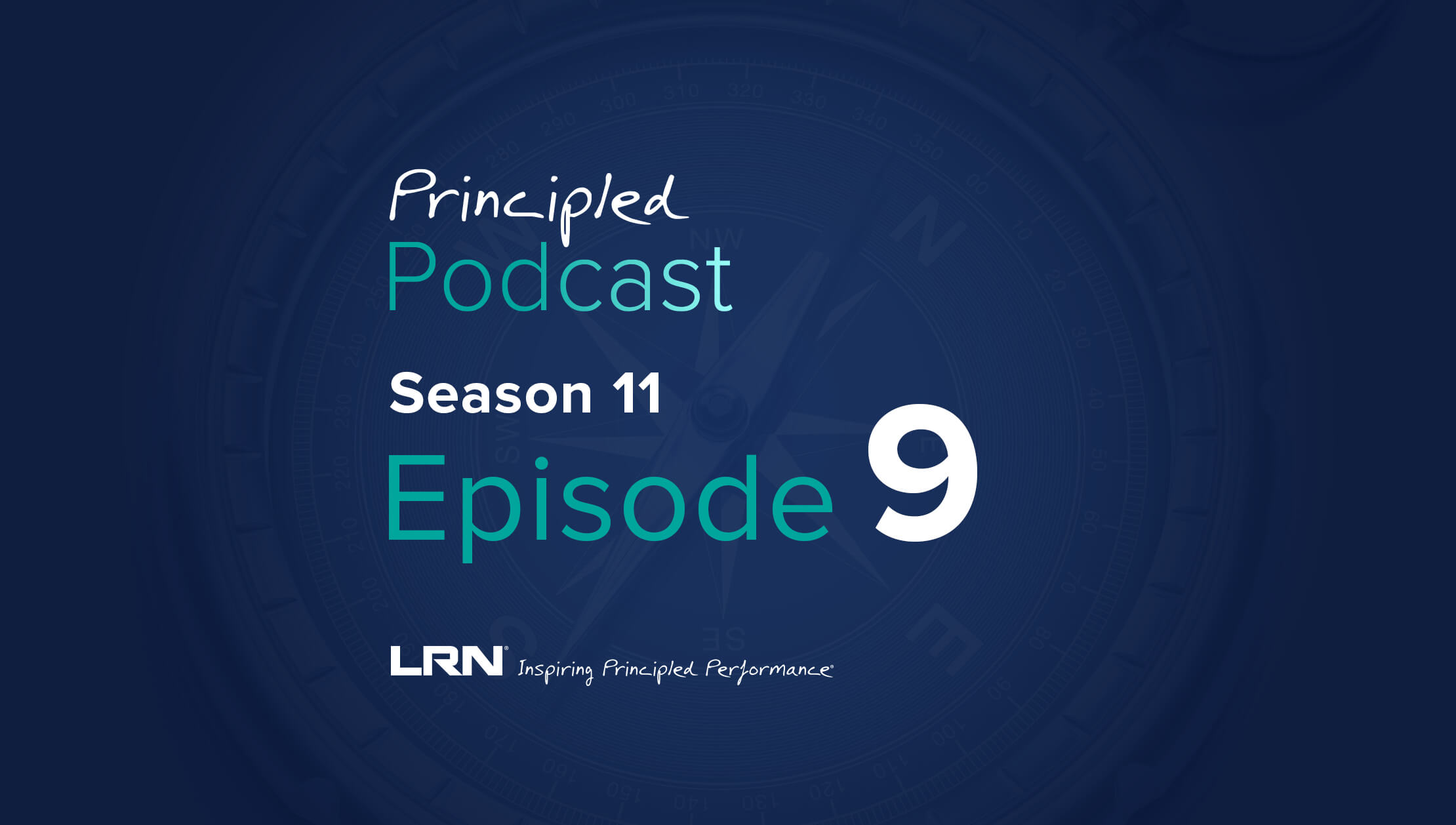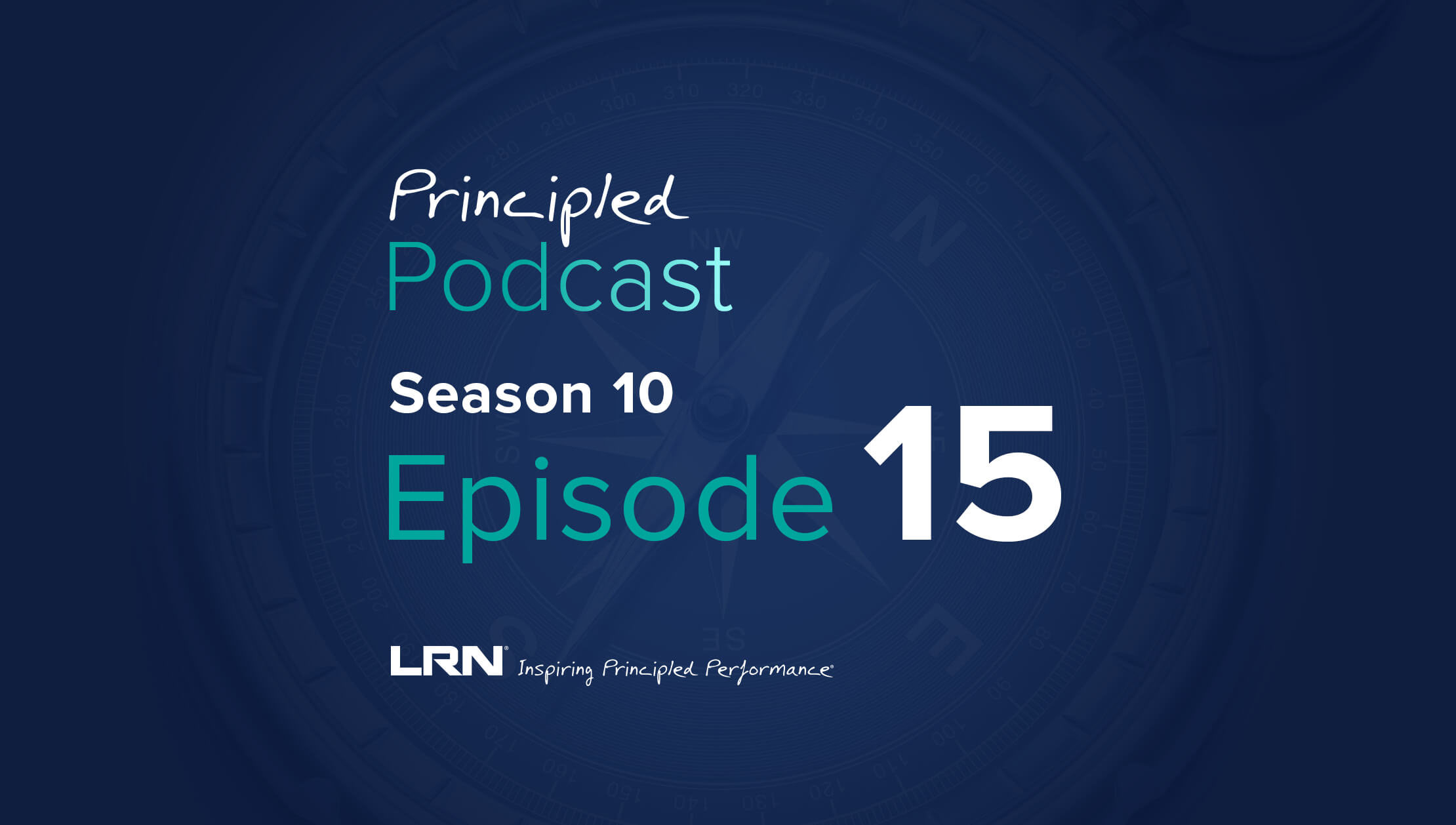The modern-day workplace is evolving. More companies around the globe are dedicated to creating unique, engaging, and mission-driven cultures. Business leaders understand that culture is central to employee retention, principled performance, and financial success. A focus on culture is a focus on people. The best company cultures have clear guiding principles, leaders that model (and recognize!) values-based action, and atmospheres of trust, fairness, psychological safety, and belonging.
Many organizations are still early in the journey towards creating values-led and sustainable work cultures. To cultivate an ethical culture, core company values must be established and embodied throughout the entire organization. This is easy to say, but harder to do. Your code of conduct is the cornerstone. In our new white paper, Creating a code of conduct that inspires, we break down how organizations can reimagine what an effective, values-driven code of conduct looks like—on paper and in real life.
How to use your code of conduct to shape ethical culture
Your code of conduct is the literal guide for employee behavior. It brings people together through shared values and principles. A best-in-class code can unify people through values and mission, feature leadership perspectives, and inspire values-based action. At LRN, we believe that your code of conduct is your culture written down. It shapes ethical culture by providing a behavioral framework for those entering your organization, inspiring through mission and purpose, empowering employees to engage in values-led work, and supporting a safe and trustworthy work environment. Drawing from our white paper’s strategic recommendations, here are four ways to shape your organization’s ethical culture through your code of conduct.
1. Welcome newcomers to your culture. Your code of conduct will be the first thing that all new employees read when entering your organization. It is the first place that newcomers get a sense of your brand, style, and belief systems. New employees want to know: How do people act here? What are the expectations for me? What norms exist? What is most important to people? How is work navigated? A great code of conduct will invite new employees into your community, communicate core values, add clarity regarding expectations, and set the tone for future experiences.
2. Inspire connection through mission and purpose. The most synergistic cultures are those that inspire action towards a shared purpose. According to the Job Characteristics Model, work becomes more meaningful when you see how your job relates to the whole. In other words, culture is enriched when employees understand how they contribute to a powerful mission. All too often, a company’s mission is a plaque on the wall rather than an embodied, shared vision. Companies that seek to reshape their culture can leverage their code of conduct as a starting place. Enrich the employee experience by providing clear messaging on why you exist as a company and how each person contributes to success.
“Pursuing a noble mission can take you—and your organization—on the journey from WHAT to HOW, from rules to values.” —Dov Seidman, Founder and Executive Chairman of The HOW Institute for Society
3. Empower principled performance. Your code of conduct is the primary source for conveying company values and principles. Consequently, your code of conduct is foundational for creating a values-led and ethical culture. New LRN research demonstrates this to be true. LRN’s 2021 data, examining ethical culture and business outcomes, reveals new insights. “My company's code of conduct effectively communicates our ethical standards” is the top predictor1 of values-based performance. Effectively communicated principles in a code of conduct significantly increases principled performance at the organizational level.
In fact, these four factors account for approximately 50% of success in achieving company-wide values-led performance2:
- My company's code of conduct effectively communicates our ethical standards.
- Leaders explain how our values influence their decision-making.
- Even under pressure, people abide by our values and code of conduct.
- People seek guidance if they're not sure of the right thing to do.
(We’ll have additional data insights in our upcoming study on building ethical culture. Stay tuned!)
4. Support safe and trustworthy workplaces. Your code of conduct is vital to maintaining a work atmosphere characterized by a sense of trust, fairness, belonging, and freedom of expression. A code of conduct ensures that the organization’s culture remains safe and principled by setting transparent expectations for values-led behavior and providing resources for when misconduct arises. This feedback loop maintains the integrity of a company’s culture and ensures that obstacles are addressed so that the organization can thrive.
The key takeaway
The relationship between a code of conduct and ethical culture is inextricably linked. One represents written values, and the other lived values. Written values guide decision-making, enhance performance, and inspire connection. Still, only through assessing culture do we know if these values are lived out in practice. Get your own copy of our new white paper to learn more about how the two work in tandem to inspire principled performance.
Footnotes:
- Step-wise hierarchical regression analyses were run via SPSS. Out of approximately 70 ethical culture items (with substantive domains ranging from E&C Program Resonance to Organizational Justice), the item: “My company's Code of Conduct effectively communicates our ethical standards” emerged as the top predictor in the regression models.
- The stepwise regression model summary reports an R value of .70 and an R2 value of .48.



